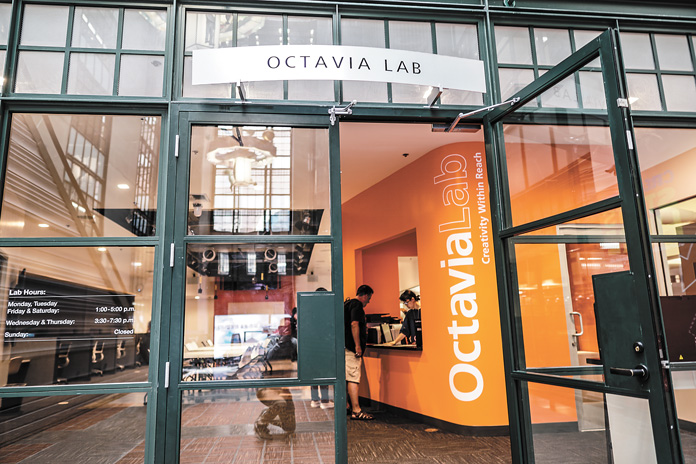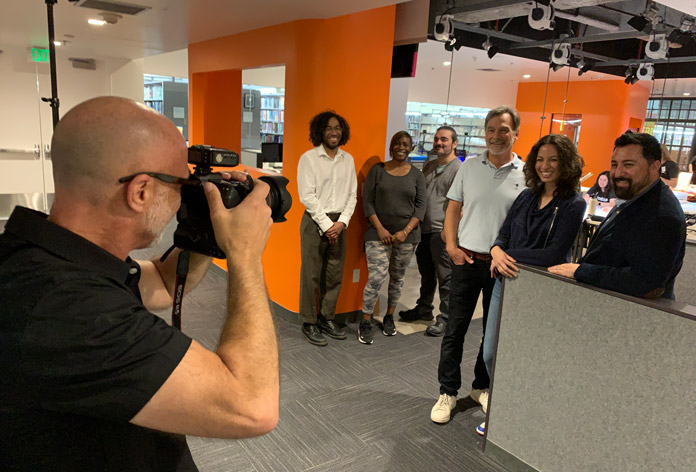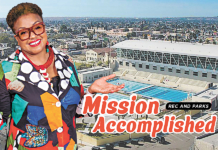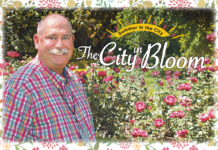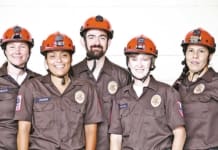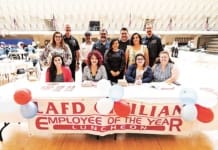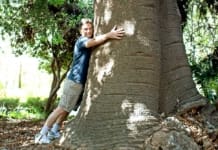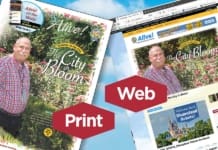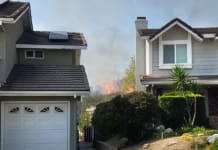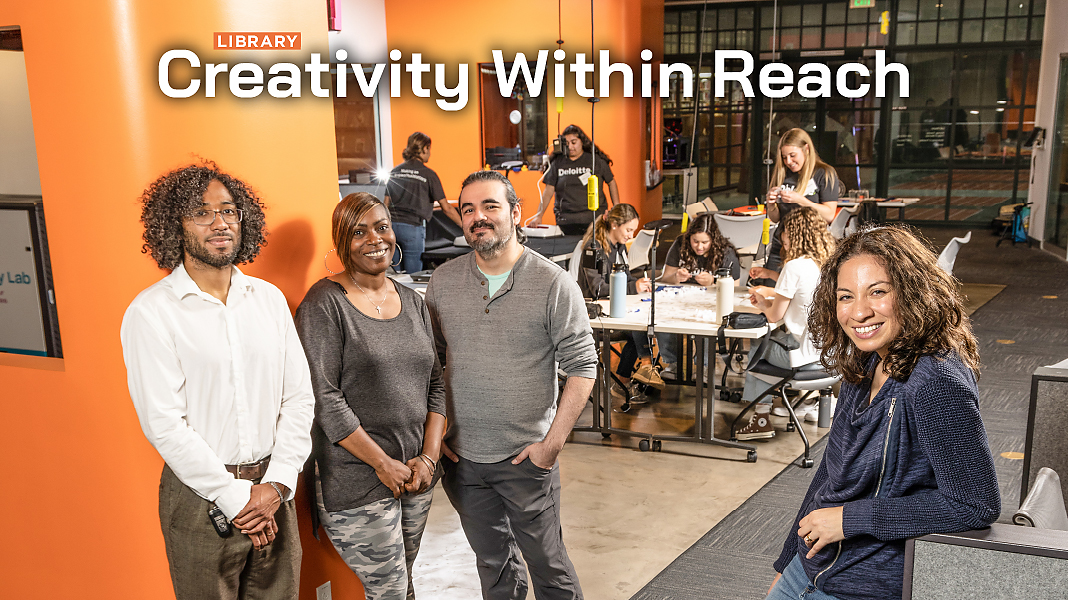
Photos for Alive! by Glenn Marzano and Club Social
Media Manager Dearbhla McNulty; and courtesy LAPL.
Octavia E. Butler headshot from the Octavia E. Butler Estate.
L
earning experiences at the Los Angeles Public Library are all in the making. That’s the idea of the expanding Octavia Lab, a makerspace (enhanced workshop) that’s a growing part of how the library sees its role in serving LA citizens.
The Octavia Lab, named after the award-winning science fiction author Octavia E. Butler, is a do-it-yourself makerspace located inside the Los Angeles Public Library’s historic Central Library. Octavia Lab provides library cardholders free and unlimited access to state-of-the-art design, fabrication, preservation and story-telling technologies.
The lab reflects the growing emphasis on entrepreneurship – learning to make it yourself – and creativity. Many schools now feature makerspaces to complement their curricula, and the LAPL is right there.
The lab opened in 2019, and expanded in May with new podcast and photography studios.
Pandemic Problem Solvers
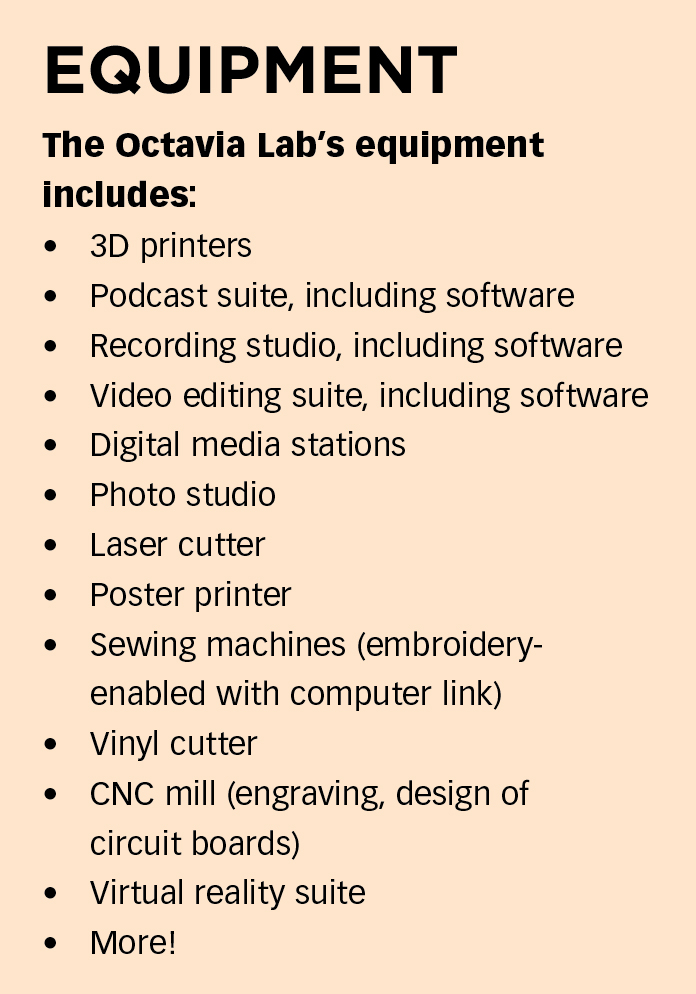
A year after the Octavia Lab opened, it had to close again because of the pandemic (the whole library closed to the public, of course.) But Library personnel got busy – they used the Octavia Lab to create face shields to keep people safe.
Quoting the Library blog: “With encouragement from Library administration and the Mayor’s Office, we have been making face shields for the medical community since April and with our partners’ and volunteers’ help, we have donated to 20 area Los Angeles hospitals, with more than 15,000 face shields.
“How did the Octavia Lab, a space where library users experimented with 3D printing and dabbled in graphic design, become a mini-factory getting thousands of medical-grade face shields into the hands of hospital workers treating COVID-19 cases? That transition wasn’t easy and we fell back to doing what libraries do. We tapped into the community of users that has formed around the Octavia Lab. As library spaces go, we pride ourselves in our community connections that include our lab users, volunteers, nonprofits, and other like-minded organizations, such as other libraries, schools, and maker groups.”
Octavia E. Butler
Octavia E. Butler (1947-2006) was a writer, creator, world-builder and genius who made room in the white male-dominated science fiction world for works with African American female leads. In her 30-year career as a published author she wrote 12 books and one collection of short stories) of monumental depth, thought and execution. How did Butler become this masterful creator of universes? Libraries, of course. Butler’s ability to be creative and to be continually inspired to create is deeply tied to her library habit. Libraries helped to shape Butler into a writer, and her relationship with the Central Library, in particular, served as an environment that allowed her to flourish. According to Butler, “Public libraries … are the open universities of America.”
She is said to have written her first novel at the Central Library, and she became an adult literacy volunteer. She helped the Library in its rebuilding efforts after the fire of 1986 devastated the library building and collection.
After her death, her works concerning Black futurism are now growing rapidly in prominence, and several are being adapted into films and television. •
|
ABOUT Octavia Lab Los Angeles Public Library makerspace LOCATION HOURS LAB MEMBERSHIP RESERVATIONS CLASS VISITS AND FIELD TRIPS |
![]()
‘The Octavia Lab unlocks people’s spirit and confidence.’
— Lauren Kratz, Librarian III and Octavia Lab Manager
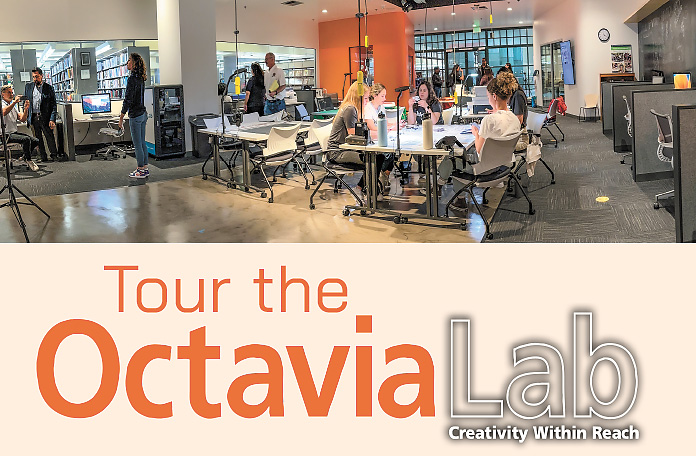
Come along as Octavia Lab Manager Lauren Kratz leads Association President John Hawkins and Club CEO Robert Larios through the lab’s many production stations. Interspersed in the interview below are images and explanations of Octavia Lab user stations. Other lab gear not mentioned below but available to lab patrons includes a laser cutter, a poster printer, a vinyl cutter, a CNC mill and a virtual reality station.
|
![]()
STOP #1: Podcast Studio 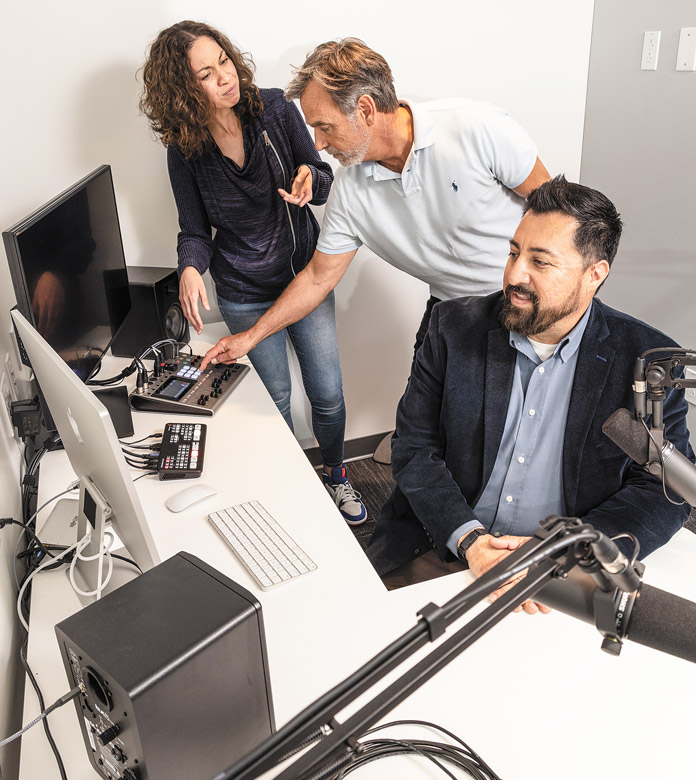 With the explosion of podcast production in the world, many library patrons requested a location to produce their own. Here it is; it’s one of the Octavia Lab’s newest offerings. With the explosion of podcast production in the world, many library patrons requested a location to produce their own. Here it is; it’s one of the Octavia Lab’s newest offerings. |
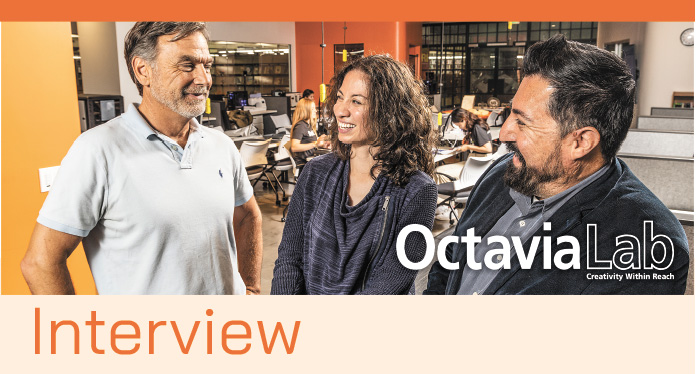
The Confidence to Create
On May 31, Club CEO Robert Larios and Alive! editor John Burnes interviewed Lauren Kratz, Librarian III and Managing Librarian of the Octavia Lab at Los Angeles Public Library’s Central Library. • The interview was conducted via Zoom.
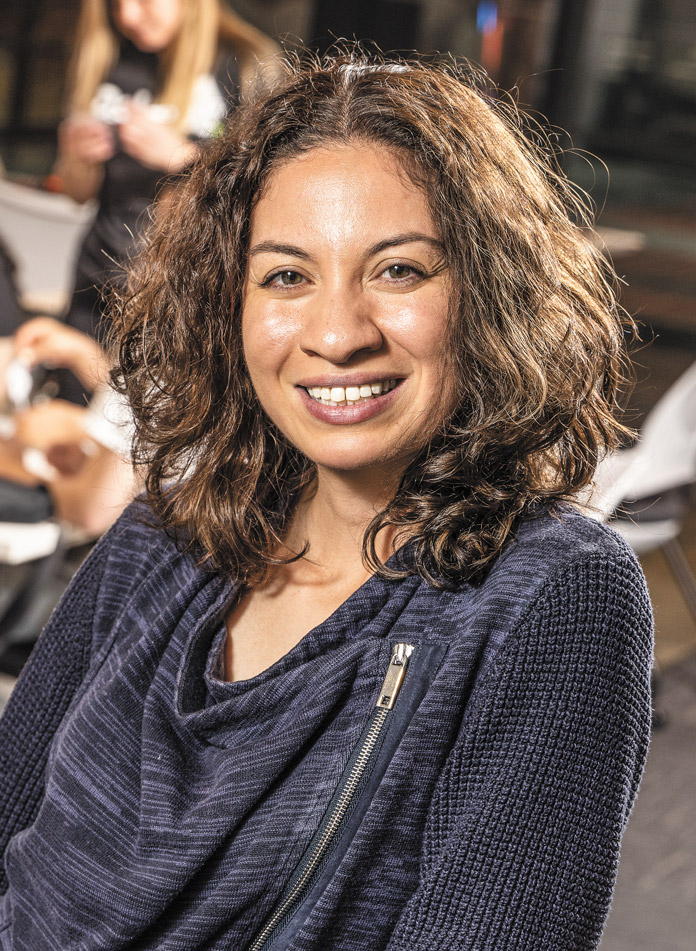
Welcome, Lauren! So you’re speaking to us from a lab kiosk actually in the Octavia Lab.
Lauren Kratz: I am!
And you’re just finished giving an orientation of the lab to a student group.
Lauren: Right! I had 71 juniors from Eastside Academy.
All part of the regular business at the Octavia Lab.
Lauren: Yes, at the do-it-yourself makerspace at the Library. I’m back now.
Lauren, tell us your path to becoming the Manager of the Octavia Lab at the Los Angeles Public Library.
Lauren: I’ve worked for the City coming up to seven years, but I’ve been a children’s librarian for nearly 17 years. I’m from Queens, New York City. I worked at the New York Public Library there for seven years, then I moved to Los Angeles. I was at the LA County Library system for almost two years, and now I’ve been at LAPL for six years. It will be seven in November.
Have you been with the lab since it opened?
Lauren: No. I’ve been in the lab for a little more than a year. I was the children’s library at the Studio City branch, and then I’ve been at Octavia Lab for a little over a year. Vi Ha, the Sr. Librarian at International Languages, opened the lab in June 2019.
![]()
STOP #2: DIY Memory Lab 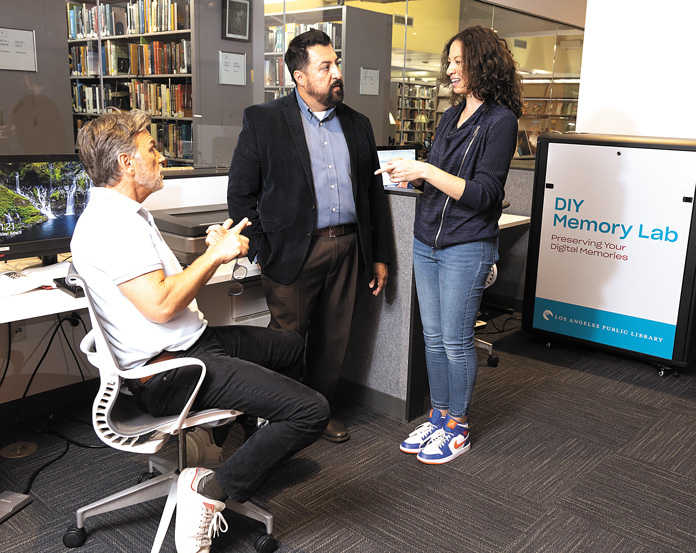 The DIY Memory Lab contains archival-grade equipment for digitizing personal archival collections. At the DIY Digital Memory Lab, patrons can digitize multiple formats of material, including documents; photos, slides and negatives; Super 8 and 8mm film (picture only, no audio); compact audio cassettes; CDs and DVDs; DVs and MiniDVs (SP); 3.5-inch floppy disks; Minidiscs; reel-to reel audio tapes; VHS tapes (SP and EP); and vinyl records (LP and 45). To use the DIY Memory Lab, patrons must have a Los Angeles Public Library card in good standing, attend an online orientation, read and agree to Octavia Lab policies, sign a release form, and make a reservation. The DIY Memory Lab contains archival-grade equipment for digitizing personal archival collections. At the DIY Digital Memory Lab, patrons can digitize multiple formats of material, including documents; photos, slides and negatives; Super 8 and 8mm film (picture only, no audio); compact audio cassettes; CDs and DVDs; DVs and MiniDVs (SP); 3.5-inch floppy disks; Minidiscs; reel-to reel audio tapes; VHS tapes (SP and EP); and vinyl records (LP and 45). To use the DIY Memory Lab, patrons must have a Los Angeles Public Library card in good standing, attend an online orientation, read and agree to Octavia Lab policies, sign a release form, and make a reservation. |

About the Lab
Describe the Octavia Lab space. We should define a makerspace in general for those people who are not familiar with them – it’s basically a communal public workshop where people can create small personal projects. What are the cardholders able to accomplish in the Octavia Lab?
Lauren: The Octavia Lab is a do-it-yourself makerspace for all Los Angeles Public Library cardholders. To become a member of the Octavia Lab, you’ll need your physical library card and a photo ID. You sign a membership agreement, and in that agreement it says, “We’re going to be polite to each other. This is a space to work on creative artistic projects. We’re going to take care of the equipment.” And then we note in their library card account that they’re a lab member. Then they can reserve and use any piece of equipment in the space for free.
What can they accomplish?
Lauren: The most popular areas in the lab are the 3D printers and the recording studio. We have one recording studio where you can record music and audio projects and also edit films. Then we have two podcasting studios where you can record podcasts and with capabilities to livestream, and then we have a photography studio, where you can use cameras and lighting equipment, which we provide, with different backgrounds and tripods for photography projects.
We had a lab member, Charles, who used the sewing machines to make his own designs and T-shirt line, and he calls it Upper Class Urban Outwear, and then he used the photography studio to then create a website to sell his shirts and to promote them. We have lab members who learn how to use one piece of equipment, and then they will transfer that knowledge and use everything in the space.
We also have a lot of families that use the space together. For instance, one family on a Saturday used the 3D printer to print bowling pins for a birthday party; used the poster printer, because lab members get one free poster print a week, to decorate for the birthday party; and then used the vinyl cutter to make stickers to give away at the birthday party. We have a lot of people who use the equipment together. We have a father and son who use the vinyl cutter a couple times a month to make gifts – they’ll make the design, heat-transfer it onto T-shirts and make that as gifts for other family members. It really is a community space where people learn and use the equipment together.
It sounds like people are way past the experimental stage like “Hey, let’s check that out.” It’s being used as an everyday resource.
Lauren: Yes, but I would say both. When anyone walks into the room, our lab staff immediately engages with them. “Do you have a reservation today? Do you have any questions about the space?” And we provide tours, so a lot of our time is giving tours for people who have never been inside the lab to show them around the equipment, and then they become lab members. Half the time is recruiting and showing people the space, and the other half is taking care of the people who are already members.
How big is the staff at the lab?
Lauren: With me is Richard Acero. He’s the Library Assistant of the lab. He’s full-time as well. Then we have Aldrich Linton, a Librarian I, who works in the space with us, and we have a rotation of Administrative Clerks from other departments around the building who also work in the space when we’re open to the public.
Who uses the space? Do they tend to be on the younger side, or older? What are you seeing?
Lauren: This is my favorite thing to talk about. In public libraries everybody’s always saying, “No one uses the library.” They say this because first you have story time for the babies and toddlers, and then they start school. And then you have our power users of older people who use the libraries. But that group from 18 to 45 is very hard to engage in the library, that’s their thinking. But that middle group is our demographic – 18 to 45. They are the lab’s power users. We have programs and hosting of field trips to engage our children and teens. We also have older people who use the space, too, but our main demographic of everyday users is 18 to 45.
What kind of training do lab members receive about using the equipment?
Lauren: We have a portal, Niche Academy, offers tutorials on how to use some of the equipment in the space. But we also describe the Octavia Lab as a learning space; I taught myself to use the equipment, and I always say, “If I went and learned, everybody can do it.”
I caution people that this is a learning space. There’s not going to be one-on-one instruction, but if you take the time and teach yourself you will get it, and again if you learn one thing you could transfer some of those skills into something else in the room, and that tends to be what happens. We are here to troubleshoot. But the lab is meant to help people learn on their own.
![]()
STOP #3: Digital Media Stations/Video and Audio Studio 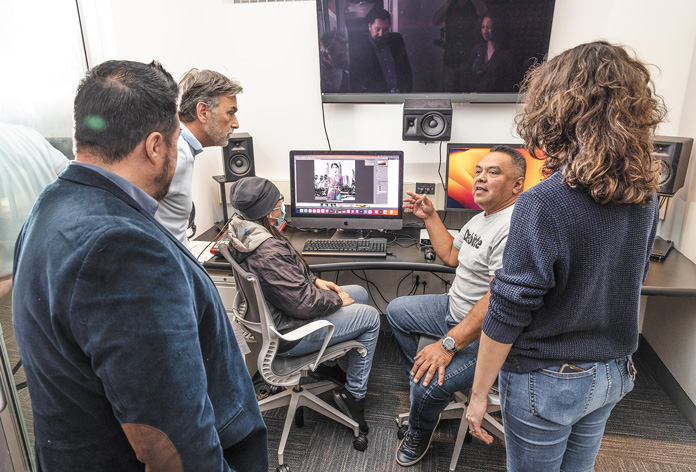 Members can design their own graphics, 3D modeling, sounds, and more at one of the lab’s Digital Media Stations. They’re equipped with Apple Mac computers and Adobe Creative Cloud. A video and audio suite, shown here, is equipped for video and audio editing. Deloitte volunteers Lily Lee (front left) and Manny Tovar prepare graphics options for future lab guests. Observing are (from left) Robert Larios, John Hawkins and Lauren Kratz. Members can design their own graphics, 3D modeling, sounds, and more at one of the lab’s Digital Media Stations. They’re equipped with Apple Mac computers and Adobe Creative Cloud. A video and audio suite, shown here, is equipped for video and audio editing. Deloitte volunteers Lily Lee (front left) and Manny Tovar prepare graphics options for future lab guests. Observing are (from left) Robert Larios, John Hawkins and Lauren Kratz. |

The Deeper Purpose

What’s the deeper purpose? The lab’s subtitle is “creativity within reach.” That’s a great phrase.
Lauren: It starts with the fact that some of this equipment is very expensive. You’re not going to want to purchase this equipment to use at home. This is equipment that most people would use maybe a couple of times a month or even a couple of times a year. Your library card gives you access to using equipment that you’re not going to be able to access in most places, especially for free, here in the lab. That’s where “creativity within reach” comes from, because it’s in reach with your library card to use for free. Easy access goes with the library’s mission statement of “easy access, and free and easy access to technology.” That’s what the lab is.
Have you seen people open up? Have you heard people say things like, “Look at what I can do now”?
Lauren: Every day! Especially when someone figures it out, especially when they finish a project. They used the sewing machine. They finished their pillow. They finished their bag. They used the vinyl cutter. They finished their sticker. When they finish I can feel their confidence and the joy that inspires them to go try something else new. It unlocks people’s spirit and confidence. People don’t have that access to different opportunities to feel joy and confidence like they do when we’re younger, and this space helps you do that.

Origins
How did the lab come about?
Lauren: The Library administration had wanted this since maybe since 2008 or 2009. They’d been talking about this for a very long time. Makerspaces had been popping up in universities for the last 10 years. Public libraries, especially LAPL, always like to be in the forefront of technology and anything new to give to their patrons. That’s why they were talking about it for so long. The high school that visited us this morning were planning on creating a makerspace at their high school. These makerspaces are going to be popping up everywhere. The LAPL’s Koreatown Media Lab just opened at the Pio Pico branch, so I feel like this will be a trend that will be happening throughout the years.
Is there a plan to have them in other branches?
Lauren: They’re definitely working on a plan. Nothing concrete yet, but I know that their future goals are to have more makerspaces throughout Los Angeles Public Library.
Makerspaces seem very entrepreneurial, reflecting the way things are done these days. What are the similarities between a makerspace and an old-school workshop?
Lauren: When most people think “makerspace,” they think of wood tools and big CNC [computer numerical control; basically any computer-driven machine] industrial mills to cut wood and things like that. But I feel like a makerspace is a place to make more than that, to make anything, and that’s why we have so many different types of equipment in the space. It could be recording equipment, sewing machines, lighting, so much. “Makerspace” is a big umbrella term, which I like. You can make almost anything that you can imagine.
![]()
STOP #4: 3D Printers  The Octavia Lab has two MakerBot Replicator+ 3D printers. Only one print request per person will be accepted and printed at a time. Equipment is available on a first-come, first served-basis. The Octavia Lab has two MakerBot Replicator+ 3D printers. Only one print request per person will be accepted and printed at a time. Equipment is available on a first-come, first served-basis. Lab Manager Lauren Kratz displays a model of a duck (right) and a 3D-printed duck. Lab Manager Lauren Kratz displays a model of a duck (right) and a 3D-printed duck. |

Success and Sewing Machines
Are your numbers growing?
Lauren: Yes. We have a weekly spreadsheet, and we update the numbers and keep track of the tours, the lab usage, how many people become members each week, our field trips and programs, things like that.
In a nutshell, at the end of April, the lab had 3,409 members; we’ve given more than 10,000 tours; and we’ve had more than 22,000 visitors.
Coming out of the pandemic, we average 650 visitors per month. More than 2,000 people visited the lab in February, and in February and March, we gave more than 400 tours. In February, we signed up more than 1,200 new members. And in March, our equipment was used for more than 600 sessions. We’re busy!
How would you describe its success?
Lauren: It is very busy. Our busiest days are Friday and Saturday. Packed. The lab is always well used. We have a constant flow of people visiting the lab. The lab reflects LAPL as a whole, because it’s constantly busy and in use.
Is there ever a time where you would recommend someone might be able to come on in when it’s not busy?
Lauren: Mondays!
![]()
‘If I learned, everybody can do it.’
— Lauren Kratz, Librarian III and Octavia Lab Manager
How are you keeping the lab up to date?
Lauren: We have a budget. We are indebted to the Library Foundation of the Los Angeles Public Library – they secure the grants and a lot of the funding. The summer reading program – that’s them. The Aloud series – that’s them. So they provide a lot of funding for the library, and they secured funding for the lab as well. So we have a funding budget every year, and for this year my colleague Richard and I worked really hard in getting new equipment. That’s how we stay current. There are going to be more 3D printers and more sewing machines, because the sewing machines have gotten very popular.
The sewing machines have gotten more popular?
Lauren: Very much so!We just opened the podcasting studios and the photo studio. Other additions will be a photo printer, sublimation printer and a bigger embroidery machine, so we’re constantly trying to update the equipment and also purchase new equipment for lab members to continue to learn how to use.
What supplies does the lab pay for, and what should people bring in on their own?
Lauren: When people reserve the laser cutter, they’re bringing in their own materials; we don’t supply the wood or the acrylic. For the sewing machine, we provide the bobbin and needles, but users would have to bring their own material for whatever they’re going to make, including their own thread; we might not have the color they need. We do supply the filaments for the 3D printer.
That’s all listed somewhere, I would imagine.
Lauren: Yes, on our website. There’s so much good information on the website. Every question you can think of is answered on the webpage.
![]()
STOP #5: Sewing Machine 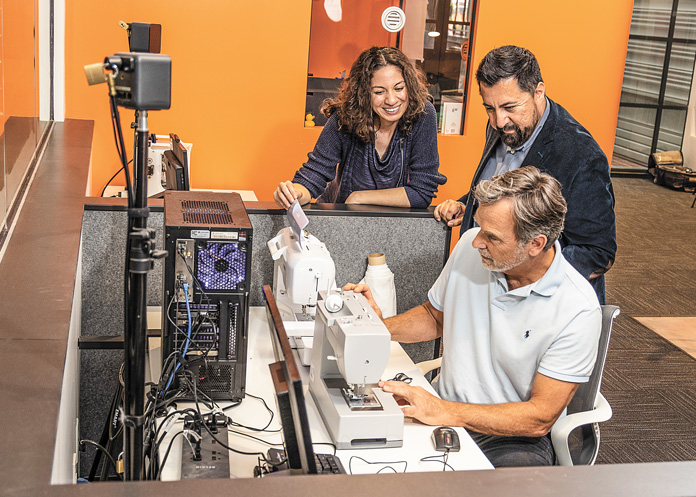 Patrons can explore crafts involving textile creations with the lab’s sewing machine and computerized embroidery machine. Patrons can explore crafts involving textile creations with the lab’s sewing machine and computerized embroidery machine. |

Octavia E. Butler

Who was Octavia Butler, and why did you name the lab after her?
Lauren: So Octavia E. Butler is a well-loved science-fiction author who was ahead of her time. It was named after her precisely because she was ahead of her time. She was an African American woman author in the 1970s, ’80s and ’90s. Her books were always about the future, and the lab is about your future. That’s why we’re always trying to see what’s new so people can have access to the future of new technology. It goes perfectly with her legacy.
What was her connection with the LAPL?
Lauren: She wrote her first book, Pattern Master, here. She did some of her writing in the Central Library. Then, she was an adult literacy volunteer. In 1986 when the Central Library had the devastating fire, she was here as an adult literacy volunteer, and the very next day she saved some of the books and help put them in the freezer. To this day, people actually make appointments with the Rare Books department to see some of the books that she saved.
She was born in Pasadena.

Awesome Projects
What have been your favorite projects that people have created in the lab?
Lauren: Some of my favorite projects I’ve seen are created when groups come together. I had a wedding party come in. The couple were lab members, and they brought their wedding party as guests, and they used the laser cutter to laser-cut their guests’ initials into the wine and champagne glasses. Instead of buying them, they designed and laser-cut them in the lab. The whole wedding party worked together around the laser cutter.
And then there was the dad and son. The son’s train tracks broke, so they designed an exact replacement train track and 3D-printed it to fix his train set.
Those are just two of them.
![]()
STOP #6: Photo Studio 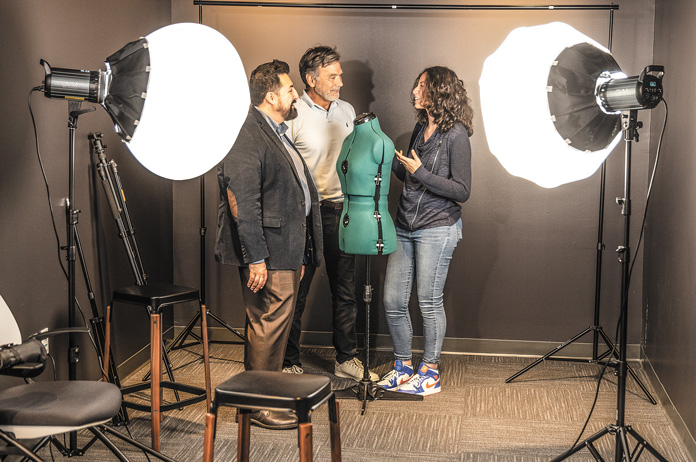 Patrons can create scenic photos and videos with a backdrop of your choice. Have your own T-shirt design? Photograph it here for your website. Patrons can create scenic photos and videos with a backdrop of your choice. Have your own T-shirt design? Photograph it here for your website. |

A Passion for Projects
It’s almost as if the sky is the limit on what can be accomplished in a makerspace. What do you love about what you do?
Lauren: I love working in the lab because we have children up to seniors using it. I love the opportunity to work with people of all different generations. That’s my favorite part.
And helping them.
Lauren: Yes. People should know that everybody belongs here and can learn. You don’t need to be trained. You can come in here and learn and figure it out. It really helps our minds and our confidence.
That’s what it’s all about, learning and confidence.
Lauren: Right.
Lauren, thank you for your time to talk to us on a busy day.
Lauren: Oh, of course. Thank you for taking the time to promote the Octavia Lab! •
|
BEHIND THE SCENES
Photographer Glenn Marzano photographs Octavia Lab personnel and Club leadership (from left) Aldrich Linton, Librarian; Elizabeth Williams, Administrative Clerk; and Richard Acero, Library Assistant; Club Association President John Hawkins; Octavia Lab Manager Lauren Kratz, Librarian II; and Club CEO Robert Larios. |


